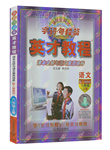题目内容
20.Cigarette smoking kills.That we know.So,manufactures made electronic cigarettes as a safer smoking choice---safer than tobacco.E-cigarettes contain the drug nicotine like cigarettes.But they do not use tobacco.And you do not light (33)them.They are powered by battery.
So,if e-cigarettes are so safe,why have poison control centers around the United States seen an increase(34)in telephone calls about e-cigarette poisonings?The answer is children.
Most of the calls are from people worried about children who have played with the devices.In the period of one month this year,the United States Centers for Disease Control say 215people called the Center with e-cigarette concerns.More than half of these calls were for children(35)aged(age) five and younger.The devices apparently had made them sick.
Tim McAfee is director of the CDC's Office on Smoking and Health.He says the problem is regulation,meaning the U.S.Federal government does not control e-cigarettes(36)even if/even though they contain liquid nicotine.
Mr.McAfee adds that liquid nicotine is a well-known danger.
"Nicotine historically has been used as a pesticide in the United States.And that's where we have really had for many,many decades significant poisonings when people got exposed to nicotine that was in liquid solutions."
Mr.McAfee explains that nicotine poisoning happens(37)when the substance gets into the skin,gets into the eyes or is swallowed.Even a small amount,he says,(38)canmake a person sick.Nicotine poisoning can cause stomach pain or a sense of imbalance.Headaches and seizures (突发疾病)are also common sighs of nicotine poisoning.And too much nicotine can kill.
Tim McAfee says e-cigarettes do not create the level of risk to people as tobacco products do.He notes that almost 500,000Americans die each year from cigarettes.
"So,cigarettes are the winner in that contest.And we don't really know what's going to happen with e-cigarettes."
E-cigarettes do not contain hundreds of harmful chemicals(39)that/which are found in real cigarettes.So,the U.S.Surgeon General has suggested that e-cigarettes may be a useful tool for adults(40)trying(try) to end their tobacco use,or quit.
But McAfee worries that teenagers may think electronic cigarettes are harmless.They could become addicted,or hooked,on the nicotine and then start smoking real cigarettes.In other words,he fears that for young people fake (假装)e-cigarettes could be a"gateway"to the real thing.
分析 本文主要讲述了电子烟产生的原因,它的特点,危害及优点;文中讲到:由于吸烟会导致死亡,所以就有制造商生产了比香烟要安全一些的电子烟;这种电子烟像香烟一样含有尼古丁,但它们不使用烟草;它们使用电池,所以也不用将它们点燃;尽管电子烟相对与真正的香烟要安全,但是由于它里面含有液体尼古丁,再加上美国联邦政府也没有控制它们的使用,使得美国的5岁或是更小的儿童沾染上了电子烟,因此它对于儿童也是不安全的;美国疾控和预防中心的吸烟与健康办公室主任Tim McAfee在文中介绍了液体尼古丁的危害,如:当这种物质进入皮肤,进入眼睛或被吞咽的时候,就会发生尼古丁中毒;即使是少量的尼古丁,也能使一个人生病;尼古丁中毒可引起胃部疼痛或不平衡感,头痛和突发疾病,过量的使用尼古丁还会导致死亡;但是由于电子烟不含有在真正的香烟中发现的数百种的有害化学物质,所以美国卫生局长建议电子烟可以成为成年人试图戒烟的一种有用的工具;Tim McAfee认为电子烟虽然并没有像真正的烟制品那样创造了风险等级,但是他也担心青少年会认为电子烟是无害的,会对尼古丁上瘾,然后开始吸真正的香烟.
解答 答案:
33.them 考查人称代词 根据上文"E-cigarettes contain the drug nicotine like cigarettes.But they do not use tobacco."介绍了电子烟像香烟一样含有尼古丁,但它们不使用烟草;可推测出本句的意思应是:你也不用将它们点燃;因此这里是为了避免重复,使用了"它们"来代替前面的E-cigarettes;由于此处在句中作动词light的宾语,故填them
34.in 考查介词 本句的意思是:为什么美国各地的毒物控制中心看到了关于电子烟中毒的电话在增加;因此这里指的是:在…方面有增加;故填in
35.aged 考查过去分词 此处在句中作后置定语,修饰前面的名词children;动词age与该名词构成动宾关系,意为:(长到)5岁大的孩子;故填aged
36.even if/even though 考查从属连词 本句的意思:他说,问题在于监管,即使电子香烟里含有液体尼古丁,联邦政府也没有控制它们;本句是一个让步状语从句,故填even if/even though"即使,尽管"
37.when 考查从属连词 分析句意可知,此处在句中作时间状语;意为:当这种物质进入皮肤,进入眼睛或被吞咽的时候,就会发生尼古丁中毒;故填when
38.can 考查情态动词 分析句意可知,此处讲的是尼古丁产生的危害,即:即使是少量的,也能使一个人生病;故填can
39.that/which 考查关系代词 根据句意"电子烟不含有在真正的香烟中发现的数百种的有害化学物质"可知,本句是定语从句;先行词 hundreds of harmful chemicals(数百种的有害化学物质)指物,在从句中作主语,故填taht/which
40.trying 考查现在分词 分析句意可知,此处在句中作宾语 adults的补足语,并且宾语 adults与动词try构成了逻辑上的主谓关系;故填trying
点评 本题主要考查了各种语法在短文中的具体运用.做本题时,需要在正确理解短文的前提下,逐句分析句意以及所考查到的语法现象;因此在平时的学习中,应熟练掌握各种语法知识,其中包括词法,句法,各种时态语态以及虚拟语气等.

 字词句段篇系列答案
字词句段篇系列答案| A. | Bought | B. | To buy | C. | Being bought | D. | Having bought |
| A. | are | B. | is | C. | have been | D. | has been |
| A. | had been repairing | B. | was repairing | ||
| C. | has been repairing | D. | would be repairing |
| A. | how | B. | when | C. | where | D. | whether |
| A. | handle | B. | solve | C. | follow | D. | suffer |
| A. | what | B. | when | C. | that | D. | which |